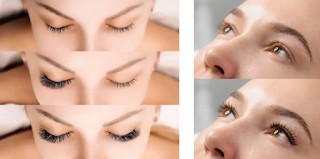What is Latisse?
Latisse is a popular prescription treatment used to enhance the appearance of eyelashes. It contains bimatoprost, a prostaglandin analog that stimulates the growth of eyelashes, making them longer, thicker, and darker. Latisse is an FDA-approved medication specifically designed for this purpose.How to Use Latisse:
Latisse should be applied to the base of the upper eyelashes once a day. Before application, ensure that your face is clean and free of makeup or contact lenses. Using the provided applicator brush, apply one drop of Latisse along the base of the upper eyelashes. Take care not to get the medication in your eyes, and if any excess medication gets on other areas of the face, wipe it away with a tissue.
Most users start to see results within four to eight weeks of using Latisse, with full results typically appearing after 12 to 16 weeks of regular use. Your eyelashes will gradually become longer, thicker, and darker during this time. It is important to note that you need to continue using Latisse to maintain the results.
The Cons of Latisse:
Like any medication, Latisse can cause side effects in some users. The most common side effects include redness, itching, and dryness of the eyes. Some individuals may also experience darkening of the skin around the eyes or a change in the color of the iris. If you experience severe side effects, such as difficulty breathing or facial swelling, seek immediate medical attention.
Safety Precautions:
Latisse is generally considered safe and effective when used as directed. However, it is important to use the medication only as prescribed by your doctor and follow the instructions carefully to avoid any potential side effects. Latisse is not recommended for pregnant or breastfeeding women, as there is limited research on its safety in these populations. It is also not suitable for individuals with a history of eye problems or those allergic to any of the ingredients in Latisse.
Latisse is specifically approved for use on the upper lashes. Using it on the lower lashes can cause the medication to enter the eye, potentially leading to side effects. The cost of Latisse can vary depending on the pharmacy and location, and it should be stored at room temperature away from heat and light. Contact lenses should be removed before applying Latisse, and makeup can be applied once the medication has fully dried. It is important to note that if you discontinue using Latisse, your lashes will gradually return to their previous state over several weeks to months.
Tips for Using Latisse:
To maximize the effectiveness of Latisse, here are some tips to keep in mind:
- Always apply Latisse to clean, dry skin.
- Use a new applicator brush for each application to avoid contamination.
- Be patient and consistent with your use of Latisse, as results take time.
- Follow the recommended amount of Latisse and avoid applying excessive product.
- Take care to avoid getting Latisse in your eyes or on other areas of the face.
- If you experience any concerning side effects, discontinue use and consult your doctor.
Conclusion
In conclusion, Latisse is a safe and effective treatment for enhancing eyelashes. By using it as directed and being patient, users can achieve longer, thicker, and darker lashes. It is important to adhere to the instructions and seek medical attention if severe side effects occur.FAQs
Can Latisse be used on eyebrows?
Latisse is specifically formulated and FDA-approved for use on the upper eyelashes to promote their growth and enhance their appearance. There is no established evidence to support its effectiveness or safety when used on eyebrows. It is important to follow the recommended usage instructions and consult with a healthcare professional for alternative options if you are seeking to enhance your eyebrows.
Can Latisse cause eye color change?
There have been reports of Latisse potentially causing changes in eye color, particularly in individuals with light-colored eyes. These changes may manifest as an increase in brown pigmentation of the iris. It is advisable to discuss this potential risk with your healthcare provider before using Latisse, especially if you have light-colored eyes.
How long does it take to see results with Latisse?
Most users typically begin to see visible results within four to eight weeks of consistent use of Latisse. However, full results, including longer, thicker, and darker eyelashes, may take up to 12 to 16 weeks. It is important to continue using Latisse as directed and be patient to achieve the desired outcome.
Is Latisse safe to use while pregnant?
Latisse is not recommended for use during pregnancy or while breastfeeding. The safety of Latisse during pregnancy or breastfeeding has not been established through sufficient studies. It is essential to consult with your healthcare provider for alternative options if you are pregnant or breastfeeding and seeking treatment for eyelash enhancement.
Can Latisse be used on lower lashes?
Latisse is specifically approved for use on the upper lashes and should not be applied to the lower lashes. The application of Latisse on the lower lashes can increase the risk of the medication coming into contact with the eye and potentially causing adverse effects. It is important to follow the instructions provided by your healthcare provider and use Latisse only as directed.






0 Comments